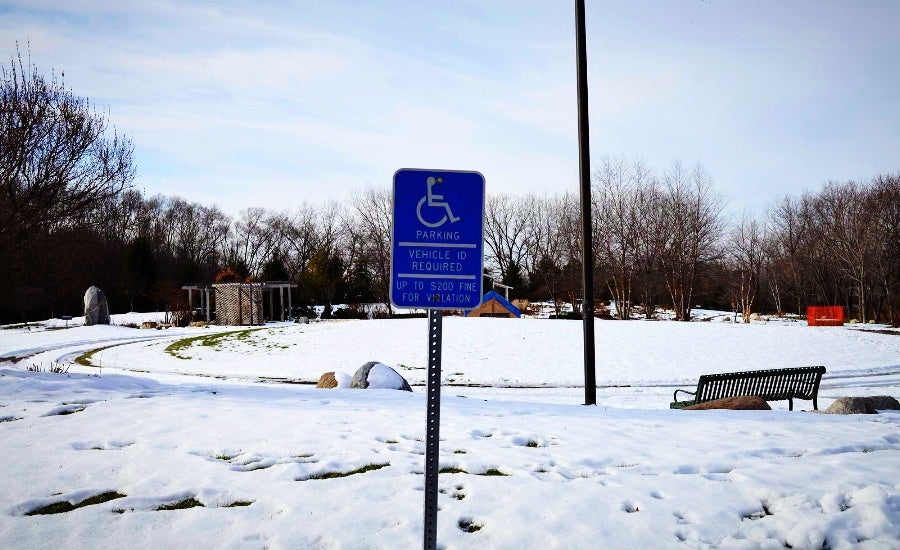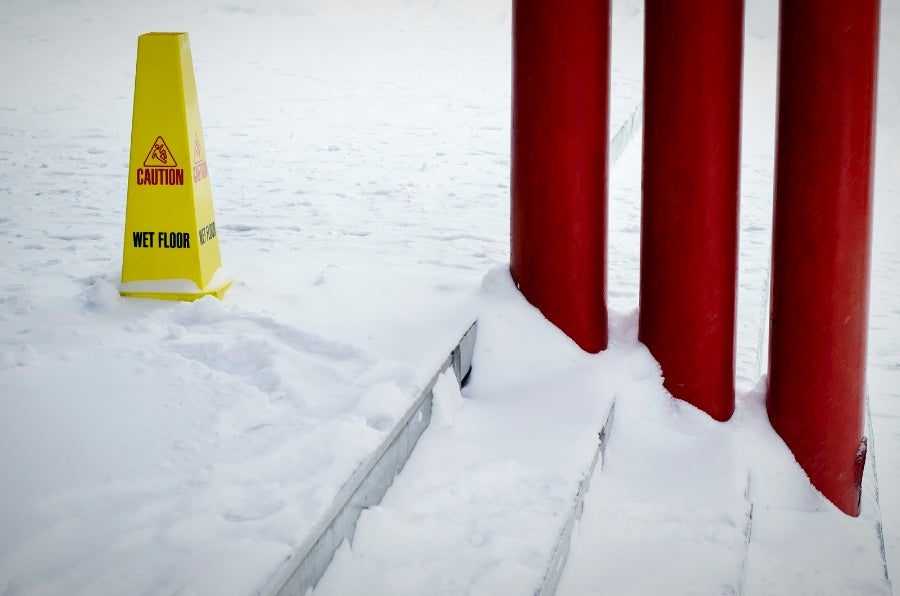Traveling from place to place during the winter season is difficult for everyone, but those who rely on a wheelchair to get around have additional challenges due to traction problems and the lack of control caused by snowy or icy conditions.
According to the Centers for Disease Control and Prevention, 2.2 million people in the United States use a wheelchair for mobility. Couple this statistic with an increasingly aging population, and you can see why making your facility safe for wheelchair users is essential to proper management of your facility.
ADA Considerations Can Cause Significant Liability Problems
Your organization may face legal trouble if snow and ice on the grounds surrounding your facility make it difficult for disabled people to travel to the building. The Americans with Disabilities Act (ADA), signed into law in 1990, prohibits discrimination against people based upon their disabilities. The law covers employment, government programs, and public accommodations, as well as transportation and telecommunications.
There are two specific instances where your organization can be vulnerable if proper care is not taken to ensure safe access for wheelchair-bound individuals:
- Title I of the ADA covers employment. If any of your employees rely on a wheelchair for mobility, you must make reasonable accommodations to make the workplace accessible for these individuals. Snowy or icy conditions can interfere with a wheelchair-using employee’s ability to arrive at the worksite safely.
- Title III of the ADA is much broader than Title I, and covers places of public accommodation. These locations include virtually all businesses and organizations except for specific facilities that are exempt, such as private clubs and religious entities. Title III of the Act ensures that disabled people are entitled to full and equal enjoyment of the goods and services that an organization offers.
Parking lots are specifically covered by the ADA. If the grounds of your facility are so encumbered by snow and ice that it’s impossible for wheelchair-bound visitors to make their way to the building, your organization can find itself the victim of not only private lawsuits by individuals, but also complaints brought by the Department of Justice that seek civil penalties as well as monetary damages.
An Aging Population Means Increased Wheelchair Use in the Near Future
The Baby Boomer generation has shifted the demographics of the United States to an increasingly aging population. One in three Americans is currently age 50 or older. As the population ages, you’re going to see more customers and visitors in wheelchairs in the years to come. This is significant to your bottom line, as marketing strategists have long spoken about how older people are known for brand loyalty, returning to places they feel comfortable with and can depend upon to service their needs reliably.
For this reason, it’s in the best interest of your organization if these elderly customers and visitors know they will be safe on your grounds. One mishap suffered by a wheelchair user can make that person choose another business over yours for their future needs. To retain these customers, you need to ensure that they are able to safely travel to your building without problems caused by snowy, icy conditions.
Since wheelchair users will become an increasingly larger part of your customer base, it is important to make sure that your grounds are accessible to these individuals. Heated mats on your walkways can help ensure that this segment of your clientele is able to safely access your building. This goes a long way to keeping these individuals satisfied with the services that your organization offers.


